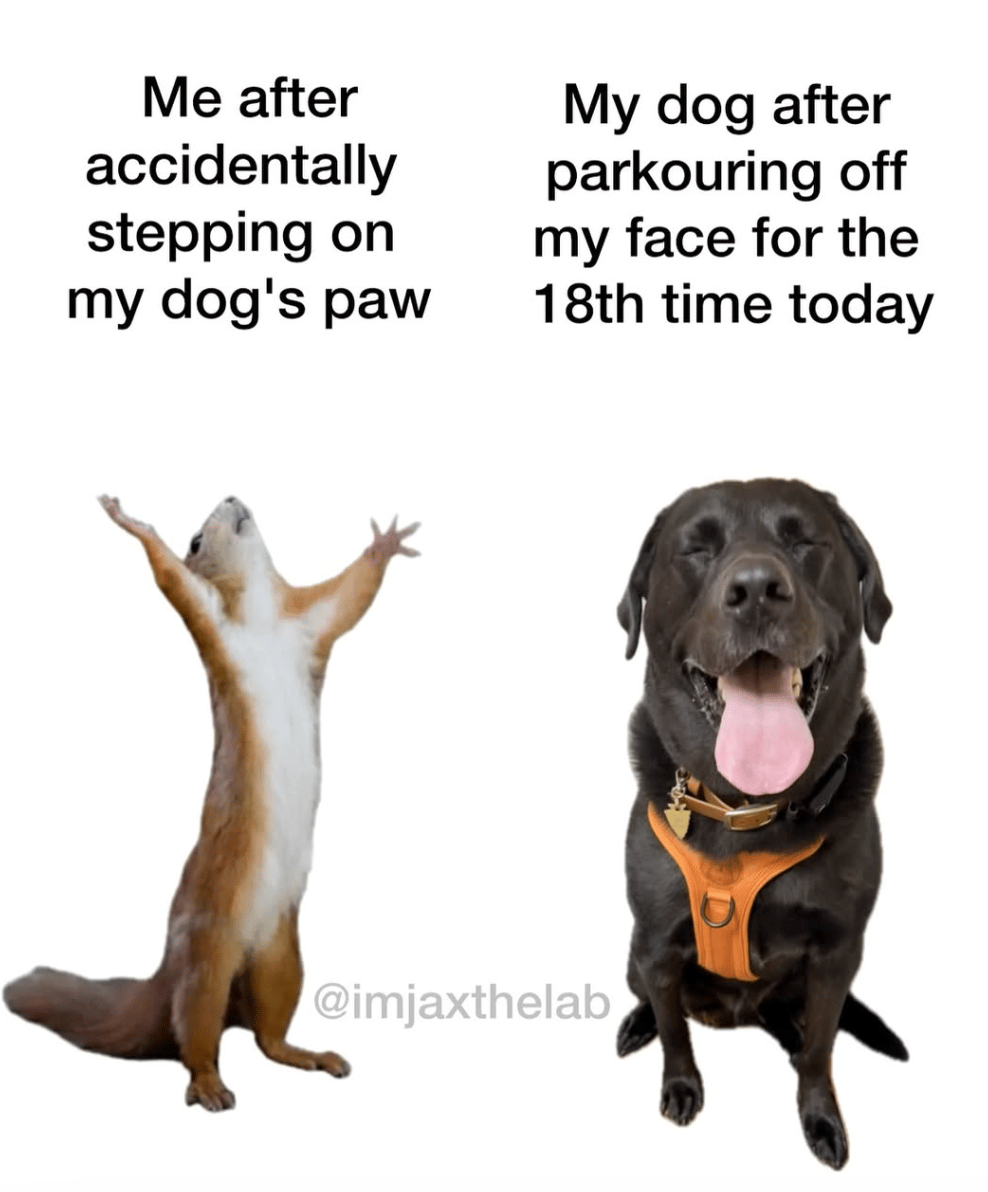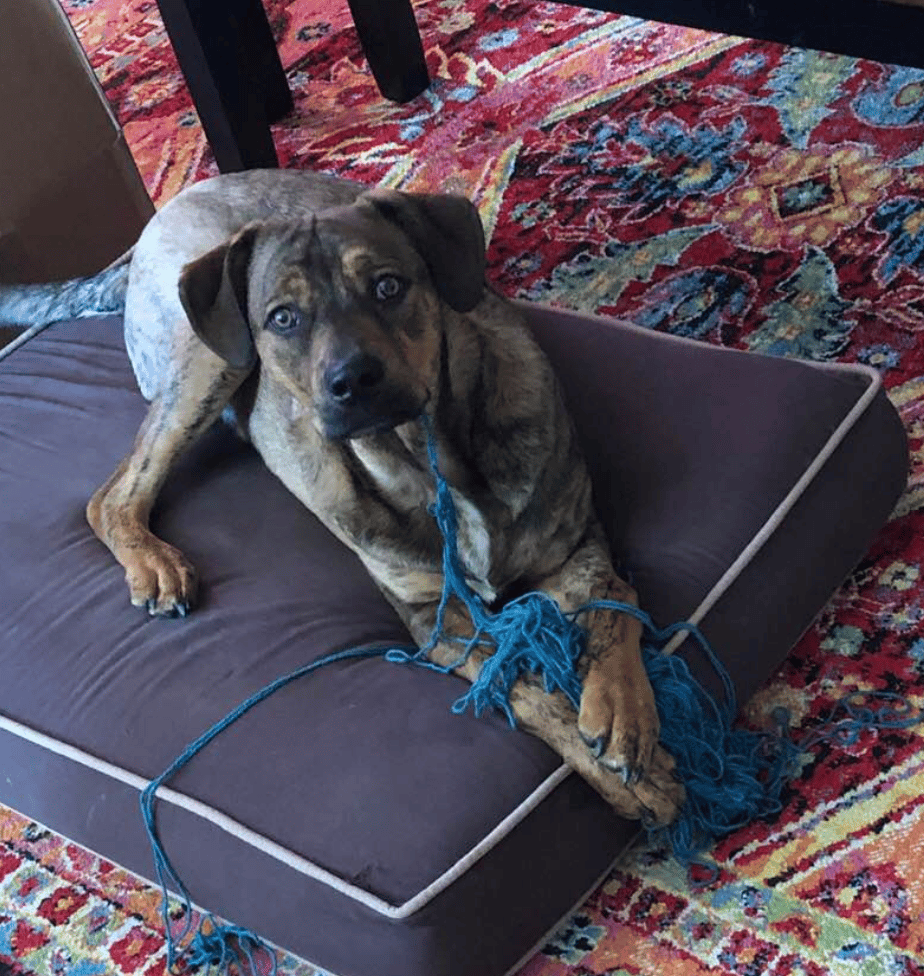Your daily dose of doggy goodness!
Every day, we celebrate our shared love of dogs and hopefully brighten your day. Enjoy!
Dog(s) of the Day:
Mya Mango!

Want your pup to be featured here? Join our Facebook group - Post Your Pooch!
Meme of the day: That’s the truth!

Go from AI overwhelmed to AI savvy professional
AI keeps coming up at work, but you still don't get it?
That's exactly why 1M+ professionals working at Google, Meta, and OpenAI read Superhuman AI daily.
Here's what you get:
Daily AI news that matters for your career - Filtered from 1000s of sources so you know what affects your industry.
Step-by-step tutorials you can use immediately - Real prompts and workflows that solve actual business problems.
New AI tools tested and reviewed - We try everything to deliver tools that drive real results.
All in just 3 minutes a day
A Guide to Identifying Fall Allergies in Your Dog
As the air turns crisp, the leaves put on their stunning color show, and pumpkin spice returns, many of us adore the fall season. But for some of our beloved canine companions, autumn can bring more than just cozy walks—it can trigger a round of seasonal allergies.
If your dog seems itchier, scratchier, or gooier than usual, they might be reacting to fall's specific allergens. Unlike human hay fever, which often manifests as sneezing and watery eyes, dog allergies primarily affect the skin.
Here's how to spot the common signs of fall seasonal allergies in your dog so you can help them find relief and enjoy the season!

The Most Common Fall Culprit: Ragweed
While grass pollens typically dominate the spring and summer, the single biggest trigger for fall allergies in dogs is often ragweed. This plant releases vast amounts of pollen, usually peaking in autumn, well after other summer foliage has died down. Mold spores are another significant fall allergen, thriving in damp, decaying leaves and soil.
Key Signs of Seasonal Allergies in Dogs
The telltale signs of canine allergies are focused on the skin, but they can affect other areas, too. Look out for these symptoms:
1. Excessive Itching and Scratching (Pruritus)
This is the number one sign of a dog allergy. Your dog may start scratching, rubbing, or rolling against furniture or the carpet with unusual intensity or frequency. This itching can be localized or generalized across the body.
2. Skin Irritation and Inflammation
The constant scratching often leads to visible signs of distress on the skin. Look for:
Redness and inflammation, especially in the armpits, groin, belly, and between the toes.
"Hot spots" (acute moist dermatitis), which are localized, raw, red, irritated lesions caused by excessive licking or chewing.
A dull, greasy, or smelly coat if a secondary skin infection (yeast or bacteria) has taken hold.
3. Paw Chewing and Licking
If you notice your dog constantly licking, chewing, or biting their paws, it's a huge indicator of seasonal allergies. The skin on the paws is a prime spot for allergens to land and cause irritation. Over time, the paws may look red, swollen, or even appear brown/rust-colored from saliva staining.
4. Chronic Ear Infections
Allergies are a leading cause of recurring ear infections in dogs. If you see signs like frequent head shaking, scratching at the ears, or notice a brownish discharge or unpleasant odor from the ear canal, it's often a sign of underlying seasonal irritation.
5. Other Signs (Less Common)
While skin issues are primary, some dogs may exhibit more traditional 'hay fever' signs, including:
Runny eyes or redness.
Mild sneezing or a runny nose (though this is far less common than in humans).
Is It a Fall Allergy or Something Else?
While these signs strongly suggest seasonal allergies (often called atopic dermatitis), it's important to rule out other causes that can cause similar symptoms, such as:
Flea Allergy Dermatitis (FAD): Even one flea bite can cause intense itching, typically concentrated near the tail base.
Food Allergies: Unlike seasonal allergies, which wax and wane with the seasons, food allergies usually cause itching year-round.
Mange or Scabies: Caused by mites and requiring specific veterinary treatment.
The key to seasonal allergies is the timing. If the symptoms reliably appear as the calendar flips to late summer/early fall and then fade as the first hard freeze arrives, seasonal allergens are the likely culprit.
What You Should Do Next
If you suspect your dog has fall allergies, don't wait!
See Your Vet: A trip to the veterinarian is crucial for an accurate diagnosis and to discuss treatment options. They can confirm it's an allergy, rule out infections, and suggest appropriate management plans.
Rinsing: After walks, especially on high-pollen days, wipe your dog's paws and belly with a damp cloth or rinse their paws to wash away pollen particles before they have a chance to settle in and cause a reaction.
Baths: Medicated or soothing oatmeal baths can wash away allergens on the skin and provide temporary relief.
A little detective work and timely veterinary care can help keep your best friend happy, itch-free, and ready to enjoy all the wonderful sights, sounds, and smells of autumn!
Dog Food and Supplement Recalls
Here are the recent recalls and advisories:
Foodynamics - Freeze Dried Pet Treats for potential Salmonella contamination.
Nature’s Own - Pet Chews Bully Bites Treats for potential Salmonella contamination.
Viva - Ground Beef for Dogs and Ground Chicken for Dogs and Cats for potential Salmonella and Listeria contamination.
Savage Pet - Cat Food Chicken for potential bird flu exposure.
Family Photo of the Day:
Bailey!

We want to feature your pup!
We want to share your pup with our pack. Email us your favorite doggy pic or video with your pup’s name, and we'll try to feature it as a family photo in one of our upcoming newsletters or on our Facebook page.
Fundraising Resource
Does the animal rescue you support need more donors and donations? This is for them! I’ve partnered with FundraiseUp for several years now and am excited to share this fantastic resource with you. FundraiseUp helps you:
Maximize online donation revenue.
Achieve 3x larger donations with a 30% conversion rate—compared to the 12% industry average.
Grow recurring giving.
Enhance the donor experience and reach a 76% retention rate for recurring donors with an AI-optimized checkout, exceeding the 60% industry average.
Refocus on the mission.
No contract, no monthly fees, and no setup costs means more resources for what matters most.
With the year-end fundraising season just around the corner, this is the perfect time to sign up! Did I mention it’s also easy to set up?
Learn more about their service, and request more information here:
I only recommend products that I have personally used and truly endorse. I receive a small commission for referring FundraiseUp. I’m confident that you will be glad you tried them out.
Share our newsletter with your friends!
Meme of the day - Instagram: @imjaxthelab




